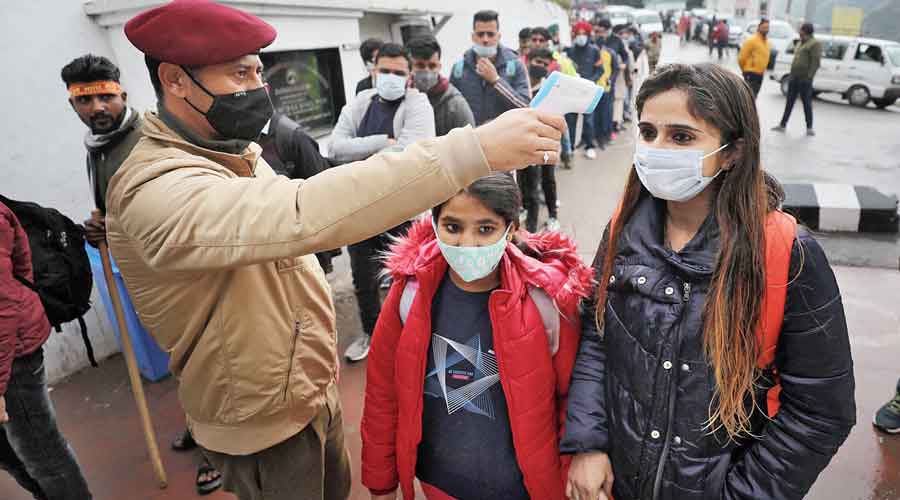Scientists have identified a unique mutation in the omicron variant’s genome that they say the virus likely picked up from a common cold virus or from segments of the human genome as it replicated in human cells.
Researchers based in the US, Canada and India have called for more studies to determine the biological significance of the mutation, which is not found in any of the 1,523 lineages of SARS-CoV-2 — the virus that causes Covid-19 —catalogued so far.
The mutation, called an insertion, has triggered speculation among some researchers whether it is part of an evolutionary process that is enabling the virus to better adapt to its human hosts.
“It is possible that this mutation is a sign of omicron being more amenable to the human host,” said Venky Soundararajan, chief scientific officer at nference, a biomedical informatics research firm in the US with units in Toronto and Bangalore.
Soundarajan and his colleagues have compared the mutation profile of omicron with those of the other SARS-CoV-2 variants, including delta which had fuelled India’s second Covid-19 wave.
Earlier studies had revealed that omicron has an unusually large count of mutations, including more than 30 in a key region called the spike protein that the virus uses to infect human cells. Many of the mutations are believed to help the virus evade human immune responses.
The nference researchers said omicron has 37 mutations on the spike among which 6 are deletions, 30 are substitutions and one is an insertion. Except for the insertion mutation, all other 36 are also found in the other SARS-CoV-2 lineages.
A genetic segment corresponding to the insertion mutation also appears in the spike protein of another coronavirus, HCoV229E, that causes common seasonal cold.
The nference scientists have also identified 750 fragments of the human genome with sequences identical to the insertion mutation in omicron.
The finding has prompted the researchers to suggest that SARS-CoV-2 may have picked up the insertion mutation through genetic exchange with the common cold virus in a person who was infected by Covid-19 and HCoV229E at the same time. Alternatively, SARS-CoV-2 may have acquired the insertion mutation from the human genome.
The discovery suggests that the evolution of SARS-CoV-2 may involve more genetic exchange between the host and the virus as well as other viral species than previously assumed. “Our study underlines that the SARS-CoV-2 pandemic cannot be examined in a silo — other viral infections such as seasonal coronaviruses or retroviruses such as HIV might also need to be factored into research on emerging variants of concern,” Soundarajan said.
Sections of biologists have speculated that evolutionary processes are likely to make SARS-CoV-2 increasingly efficient in spreading from person to person but harming its hosts less and less.
“Typically, when transmission advantage is gained during the course of evolutionary competition among other circulating variants, the virus loses virulence,” Soundarajan said. “But we cannot let our guard down. We need to continue mass vaccination globally.”
A senior virologist who was not associated with the nference study underlined the need for more research to understand the functional role of the insertion mutation.
“Viruses pick up host sequences all the time — most lead to dead ends,” said Shahid Jameel, virologist and former chief of the Wellcome Trust-DBT India Alliance, an India-UK research partnership.
“However, if that gives the virus a selective advantage, it is carried forward in the lineage. At this point, the finding is based on bioinformatics. We need functional studies to understand if the insertion gives a fitness advantage to omicron.”










